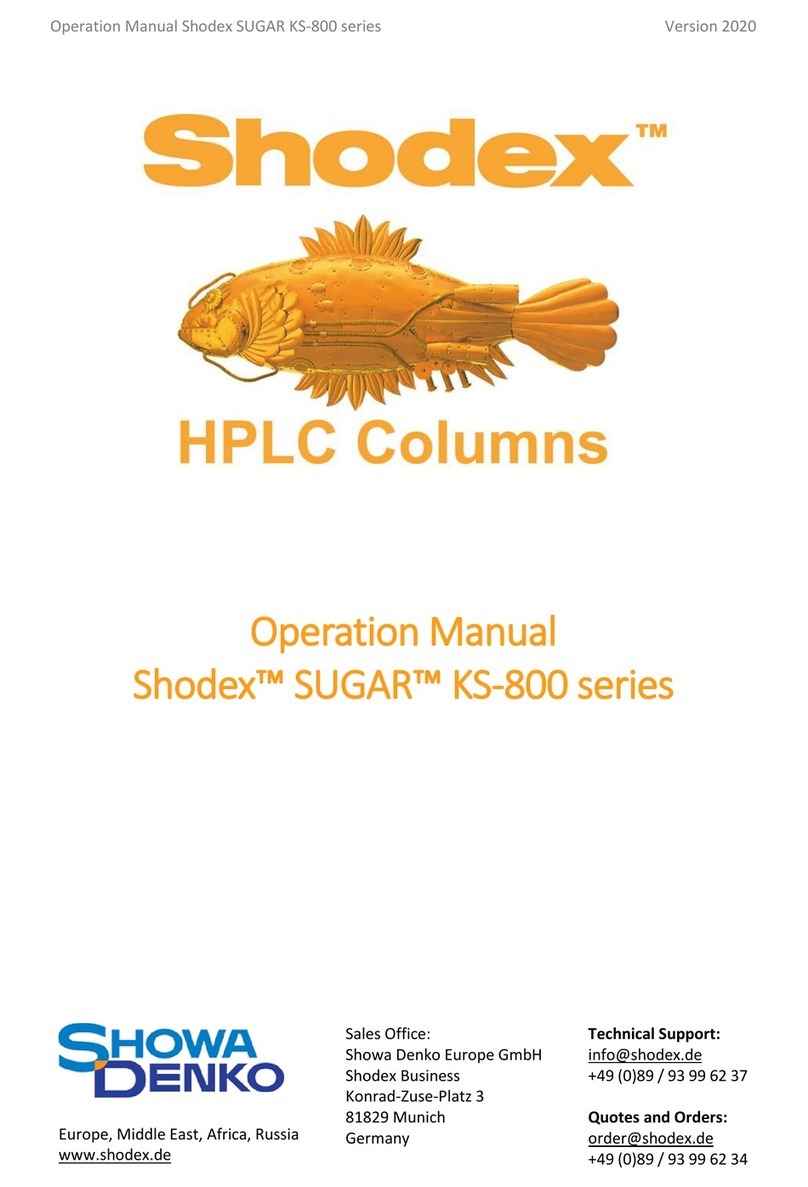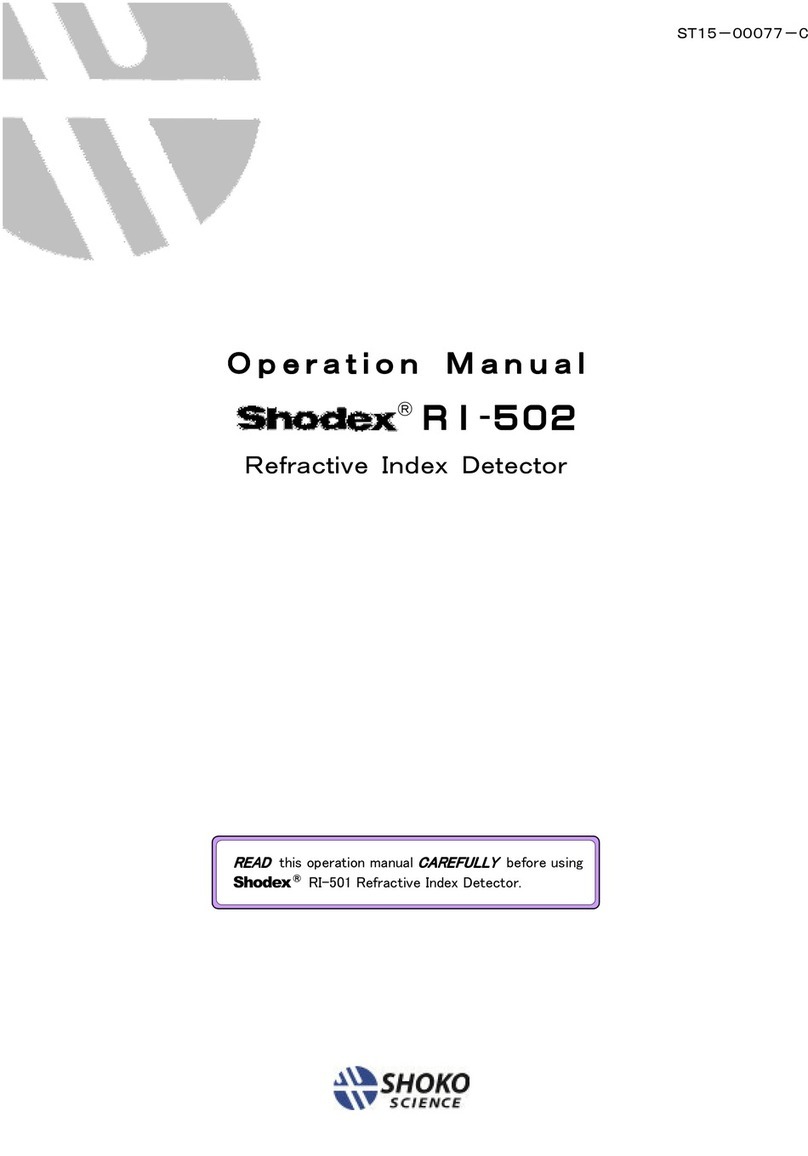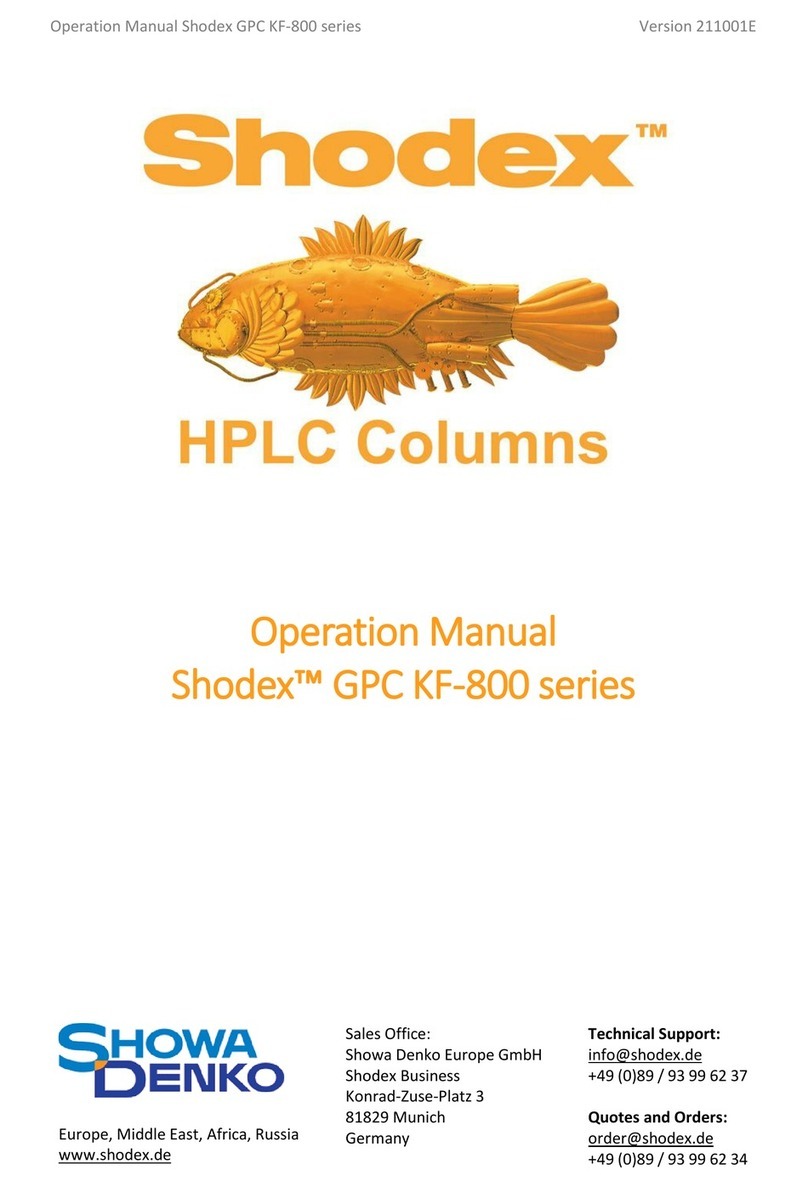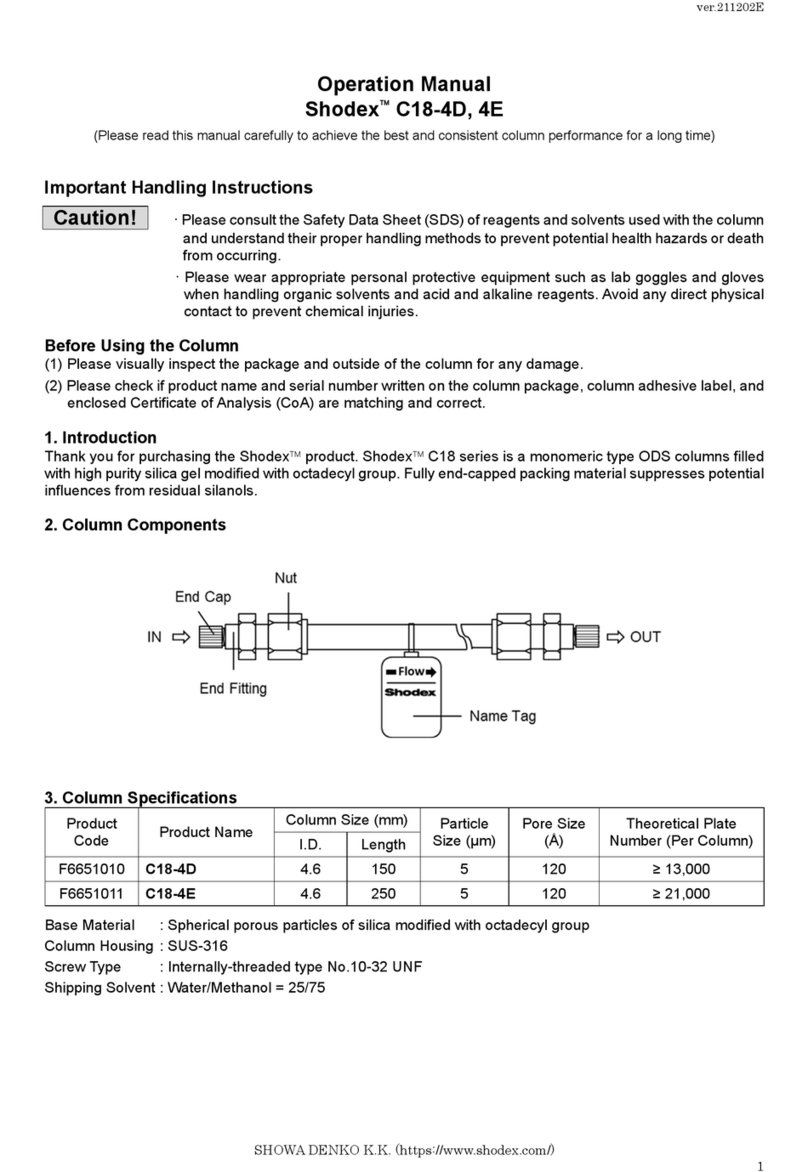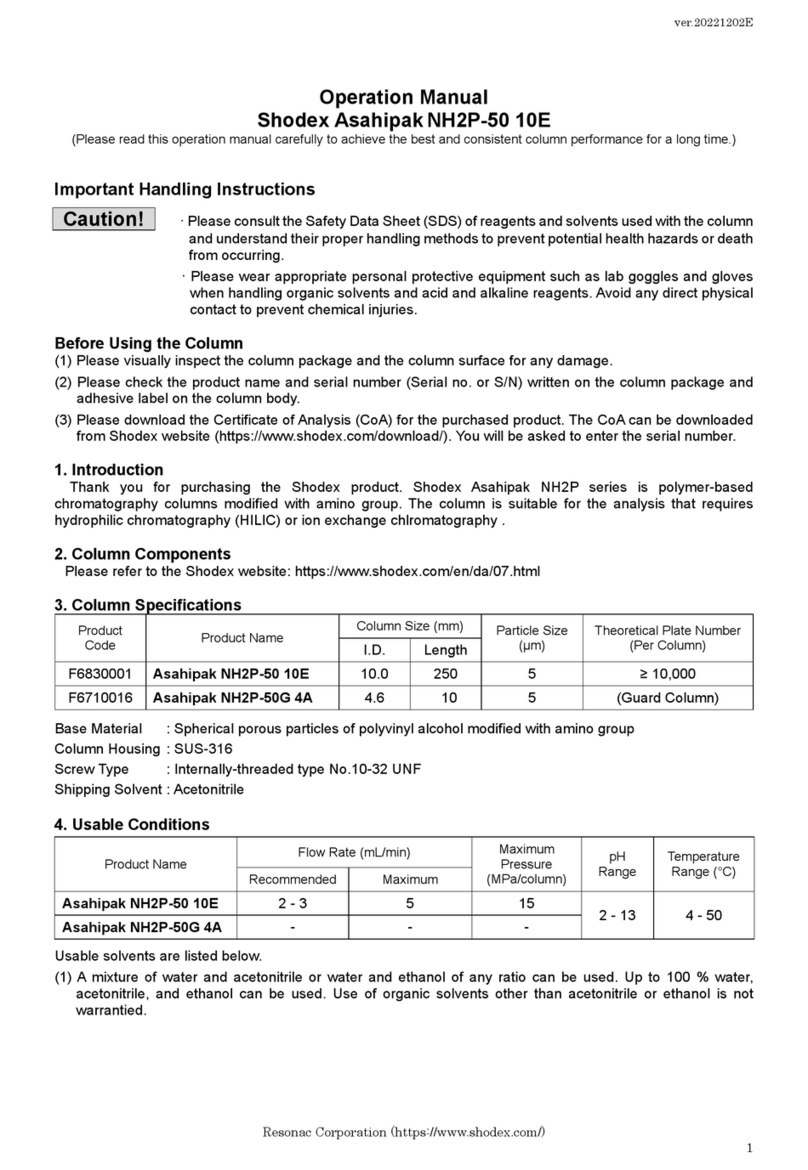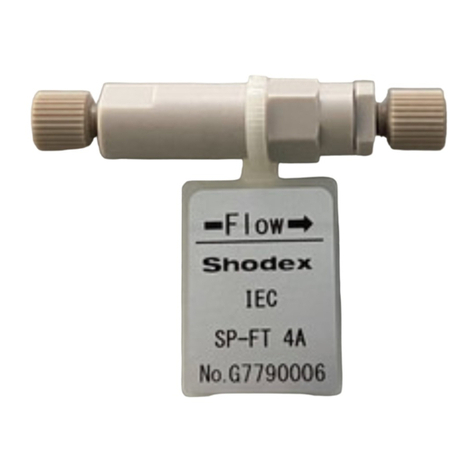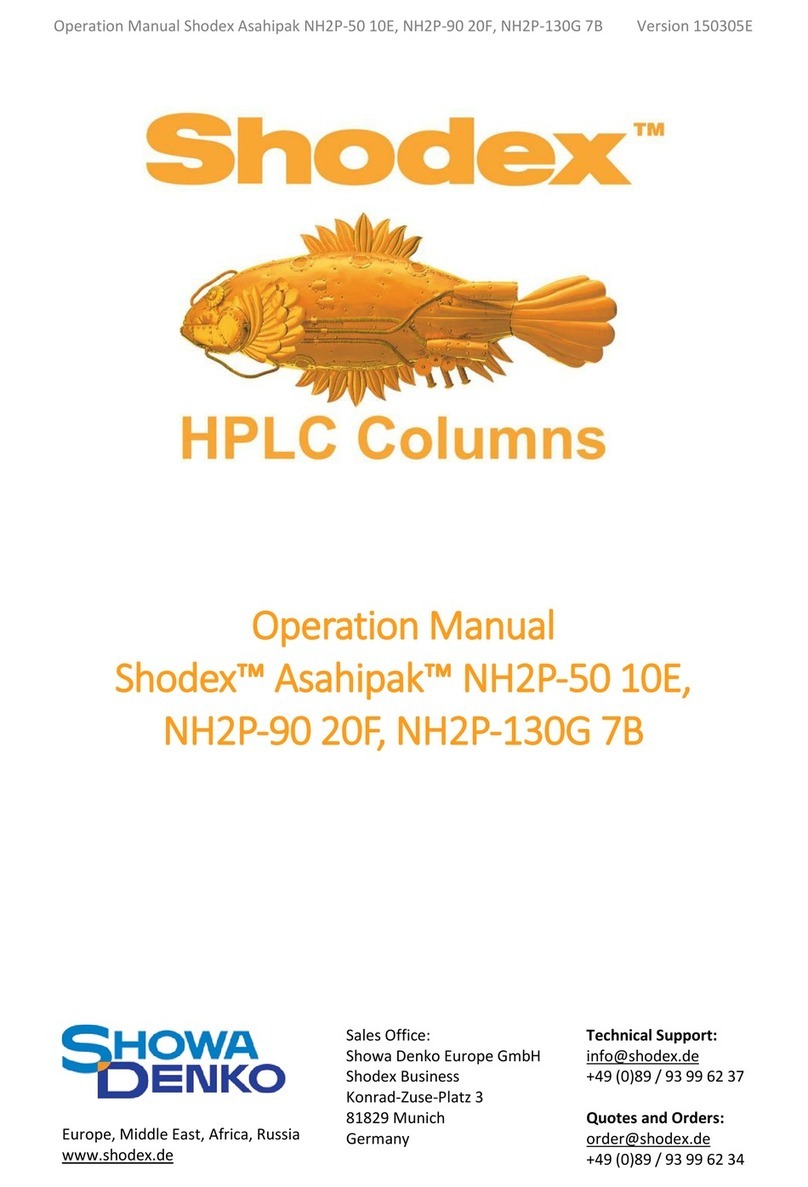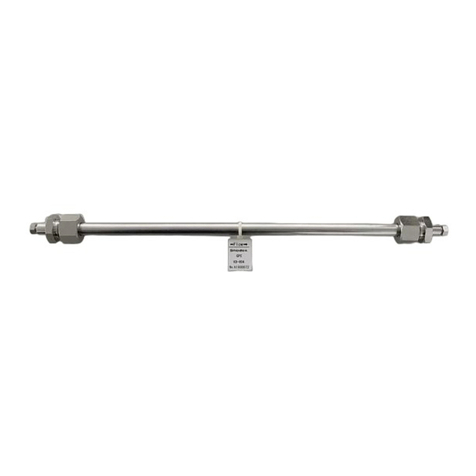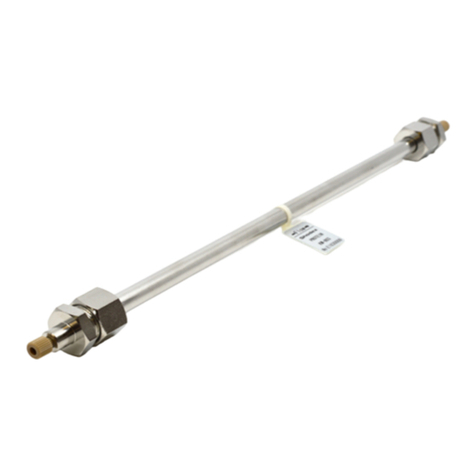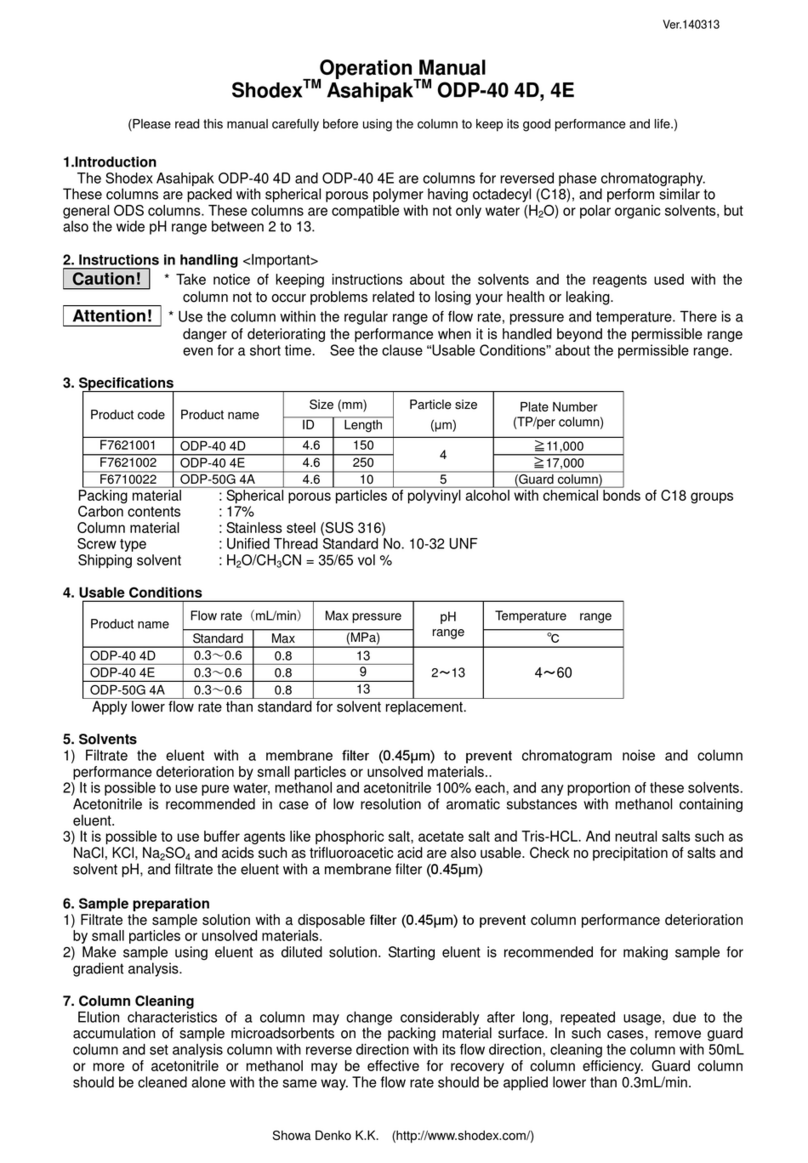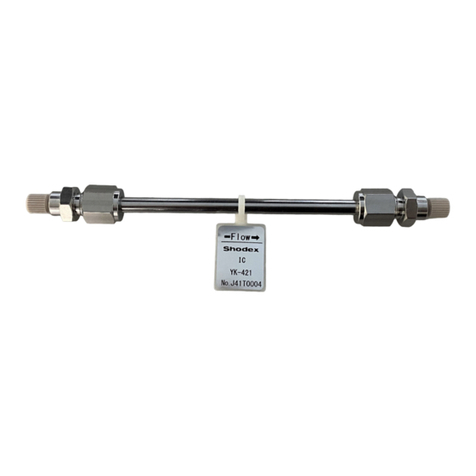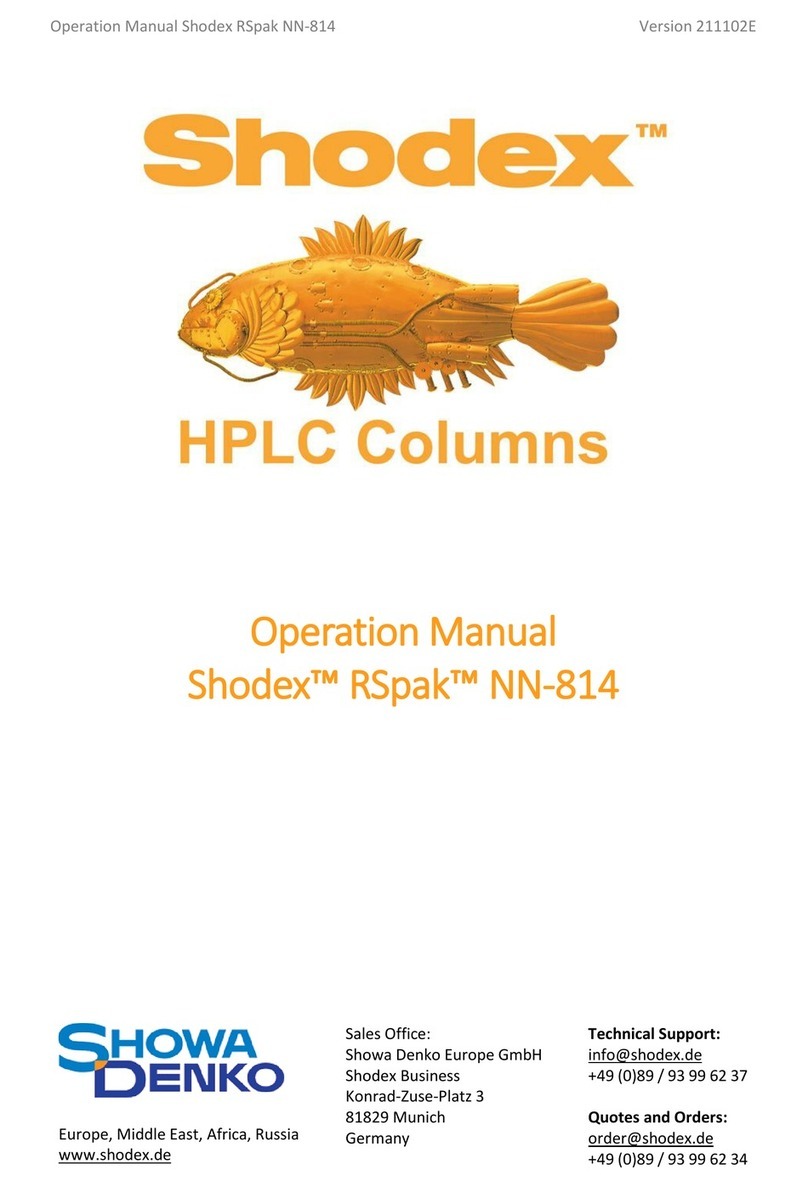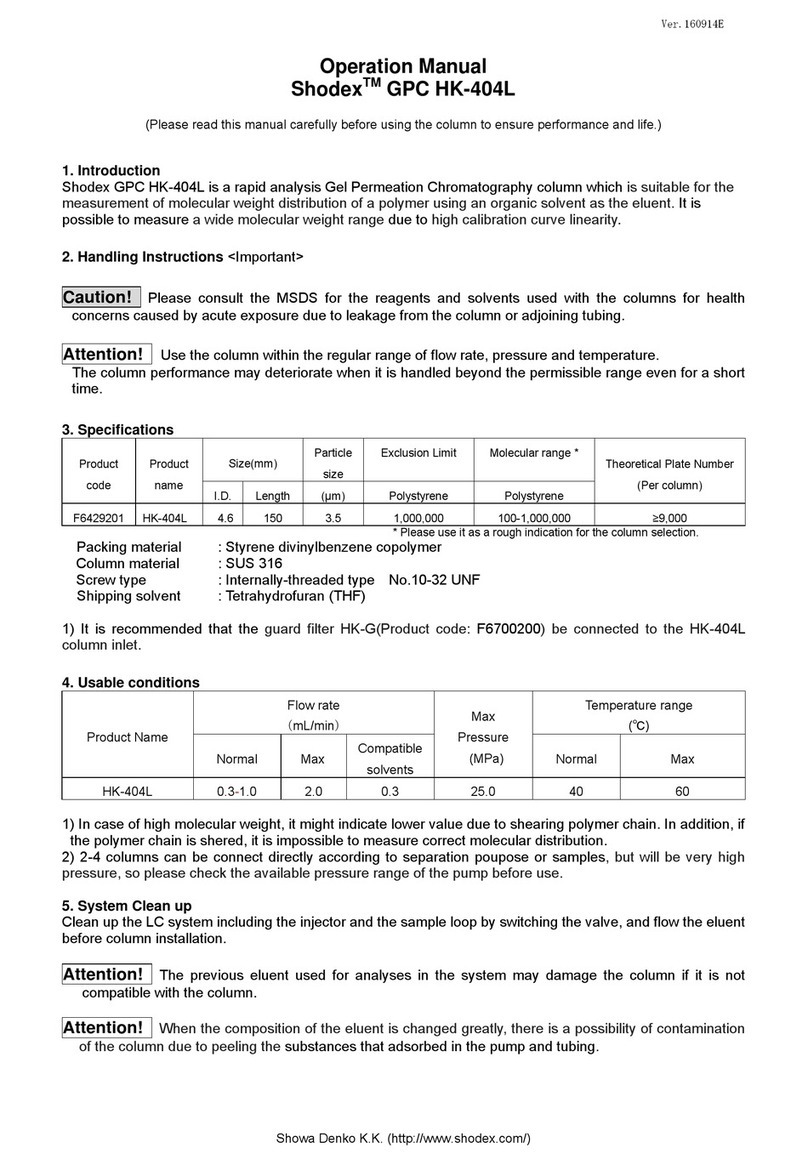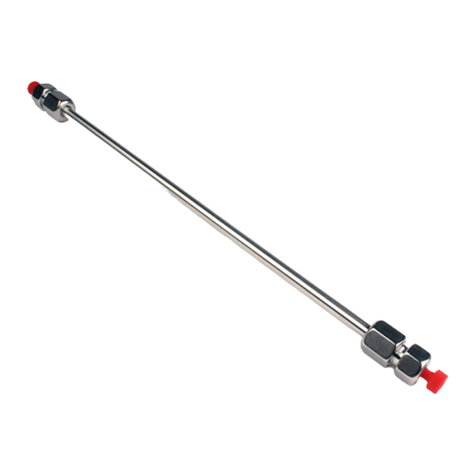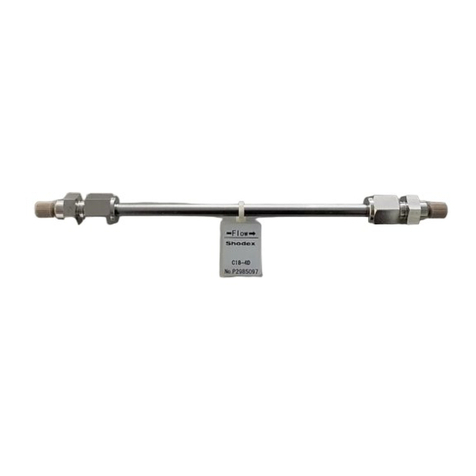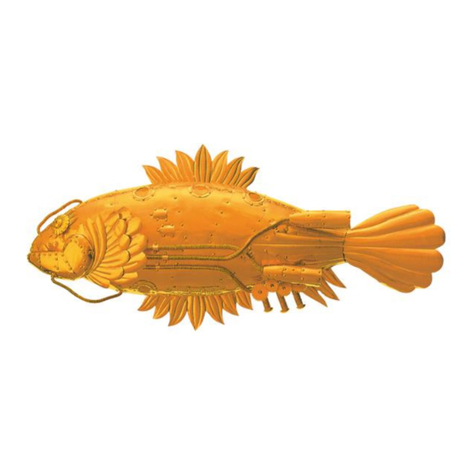
ver.211013E
SHOWA DENKO K.K. (https://www.shodex.com/)
2
4. Usable Conditions
Usable solvents are listed below.
(1) In general, a mixture of sodium carbonate solution and sodium bicarbonate solution is used.
(2) The standard eluent is 1.8 mM sodium carbonate solution and 1.7 mM sodium bicarbonate solution.
The higher the concentration of sodium carbonate solution, the faster the elution of ions will be.
(3) In case injecting more than 50 μL sample and nitrate and sulfate peaks become broad, or when analyzing a
sample with analytes’ (standard anions) concentrations less than 1 mg/L, use a mixture of 1.0 mM sodium
carbonate solution and 4.0 mM sodium bicarbonate solution.
(4) To simultaneously analyze organic acid anions, such as acetate and formic acid, and inorganic anions, use
12 mM sodium bicarbonate solution.
(5) Up to 10 % (v/v) acetonitrile or methanol is usable.
Attention! · Use the column within above stated flow rate, pressure, and temperature ranges. Using
the column outside the given range may damage the column and lower its performance.
·Column pressure is influenced by the eluent composition, flow rate, and column
temperature. When changing the eluent compositions, adjust the flow rate and column
temperature so that the column pressure remains below the usable maximum pressure.
5. Eluent Preparation
(1) Degas the eluent fully to prevent the formation of air bubbles.
(2) Presence of small debris or insoluble substances may result in deterioration of the column and/or they appear
as noise on the chromatograms. Filter the eluent with a 0.45-μm disposable filter to prevent the problems.
Attention! · Whenever water is required, use ultra-pure water freshly generated by a water purification
system or water from a newly opened HPLC grade distilled water bottle. Use HPLC grade
organic solvent whenever possible. Solvents left in an opened bottle for a long time should
not be used. The content may have been changed, absorbed moisture, or has been
contaminated.
· Always use freshly prepared solvents. Solvents stored for a long time may have changed
their compositions and may influence elution patterns and/or damage the column.
Note · Use of on-line degasser is recommended.
6. Sample Preparation
(1) Filter the sample solution using disposable 0.45-μm filter to prevent the column from clogging or deteriorating.
(2) Recommended sample injection volume is less than 50 μL per column.
(3) For the samples containing proteins, remove the proteins prior to the sample injection. The use of an
ultrafiltration membrane is recommended.
(4) For the samples containing hydrophobic impurities, remove the impurities prior to the sample injection. The
use of a solid phase extraction is recommended.
Note · Use of guard column is recommended to protect the analytical column.
Product Name Flow Rate (mL/min) Maximum
Pressure (MPa)
(Per Column)
pH
Range
Temperature (°C)
Recommended Maximum Recommended Range
IC SI-90 4E 1.0 2.0 10 3 - 12 25 20 - 60
IC SI-90G - - -





